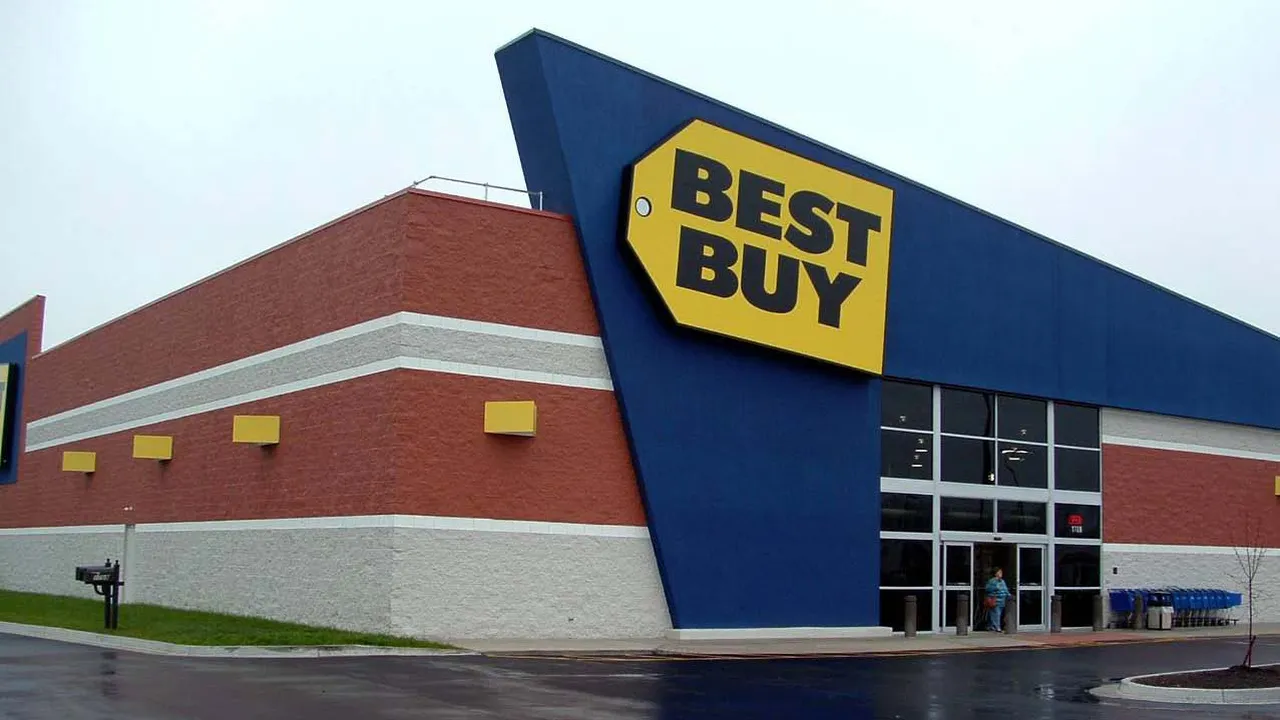3 Essential Public Relations Tips for Startups
Discover 3 crucial public relations tips that startups can use to build brand awareness, manage reputation, and attract media attention.

3 Essential Public Relations Tips for Startups
Understanding Public Relations for Startup Success
Hey there, fellow entrepreneur! So, you’ve got this amazing startup, right? You’ve poured your heart and soul into developing a fantastic product or service, built a killer team, and maybe even secured some initial funding. That’s awesome! But here’s the thing: if nobody knows about it, how are you going to grow? That’s where Public Relations, or PR, comes into play. For startups, PR isn't just about getting your name in lights; it's about strategically building your brand's reputation, fostering trust with your target audience, and ultimately driving growth. Think of it as telling your story in a way that resonates, not just with customers, but with investors, potential employees, and even industry influencers. It’s about creating a buzz, managing perceptions, and making sure your startup stands out in a crowded market. Many startups mistakenly think PR is only for big corporations with massive budgets. But honestly, for a lean, agile startup, effective PR can be even more impactful, often delivering a higher return on investment than traditional advertising. It’s about earned media – getting credible third parties like journalists, bloggers, and industry experts to talk about you, which carries far more weight than any ad you could buy. So, let’s dive into three absolutely essential PR tips that can make a real difference for your budding enterprise.
Tip 1 Crafting Your Compelling Startup Story and Messaging
This is where it all begins. Before you even think about reaching out to a journalist or posting on social media, you need to nail down your story. What makes your startup unique? What problem are you solving? Why should anyone care? Your story isn't just a dry description of your product; it's the narrative that connects with people on an emotional level. It’s about your mission, your vision, your values, and the journey you’re on. Think about the 'why' behind your startup, not just the 'what'.
Defining Your Unique Selling Proposition USP for Media Attention
Every startup needs a USP. What do you do better or differently than anyone else? Is it your innovative technology, your disruptive business model, your exceptional customer service, or a unique approach to a common problem? Clearly articulating your USP is crucial because it gives journalists and your audience a reason to pay attention. Don't just say you're 'the best'; explain how you're the best and why it matters to your customers. For example, if you're a new food delivery service, your USP might not just be 'fast delivery,' but 'eco-friendly delivery using electric bikes and compostable packaging,' appealing to a specific, growing demographic.
Developing Key Messaging Points for Consistent Communication
Once you have your story and USP, you need to distill them into key messaging points. These are the core ideas you want people to remember about your startup. They should be concise, clear, and consistent across all your communications – from your website to your press releases to your elevator pitch. Think of them as bullet points that summarize your value proposition. For instance, if your startup offers an AI-powered financial planning tool, your key messages might include: 'Democratizing financial advice,' 'Personalized insights for everyone,' and 'Secure and easy-to-use platform.' Consistency is paramount here. Everyone on your team, from the CEO to the newest intern, should be able to articulate these messages effortlessly. This ensures that every interaction with your brand reinforces the same positive perception.
Identifying Your Target Audience and Media Outlets for Maximum Impact
Who are you trying to reach? Is it tech enthusiasts, small business owners, environmentally conscious consumers, or a specific demographic in Southeast Asia? Knowing your target audience is fundamental because it dictates where you should focus your PR efforts. Once you know who you're talking to, you can identify the media outlets they consume. Are they reading industry-specific blogs, national newspapers, local community publications, or listening to podcasts? Research these outlets thoroughly. Look at the types of stories they cover, the tone they use, and the journalists who write about topics relevant to your startup. Don't waste time pitching to a fashion magazine if you're selling B2B software. Be strategic and targeted. Tools like Muck Rack (starts around $10,000/year for full features, but offers custom quotes for startups) or Cision (similar pricing, often custom quotes) can help you identify relevant journalists and track media mentions. For a more budget-friendly option, Help a Reporter Out (HARO) is free and connects you with journalists looking for sources. You can also use LinkedIn to find journalists and see what they're posting about. For Southeast Asia, consider local tech blogs like Tech in Asia, business publications like The Business Times (Singapore), or regional news sites that cover startup ecosystems in countries like Indonesia, Vietnam, and Thailand. Understanding the local media landscape is crucial for effective outreach in these diverse markets.
Tip 2 Building Relationships with Key Media and Influencers
PR isn't just about sending out a press release and hoping for the best. It's about building genuine, mutually beneficial relationships. Think of journalists and influencers not as gatekeepers, but as potential partners who can help you tell your story to a wider audience. This takes time, effort, and a personalized approach.
Personalized Outreach Strategies for Journalists and Bloggers
Forget generic email blasts. Journalists receive hundreds of pitches every day. To stand out, your outreach needs to be highly personalized. Before you even hit send, research the journalist. Read their recent articles. Understand their beat and what topics they're passionate about. Then, tailor your pitch to explain why your story is relevant to their audience and their interests. Start with a compelling subject line, keep your email concise, and get straight to the point. Highlight your USP and offer concrete data or a unique angle. Don't just ask for coverage; offer value. Can you provide an exclusive interview, a unique data point, or access to an interesting case study? For example, if you're launching a new sustainable packaging solution, you might pitch to a journalist who frequently covers environmental tech, offering them an exclusive look at your manufacturing process. Tools like Hunter.io (free tier for 50 searches/month, paid plans from $49/month) can help you find email addresses, and Streak CRM for Gmail (free basic plan, paid from $15/user/month) can help you manage your outreach pipeline. For a more advanced approach, Prowly (starts around $200/month) offers media database and press release distribution, but might be a bit pricey for early-stage startups.
Leveraging Social Media for Direct Engagement and Networking
Social media isn't just for marketing; it's a powerful PR tool. Follow journalists and influencers on platforms like Twitter (now X), LinkedIn, and even Instagram. Engage with their content authentically. Share their articles, comment thoughtfully, and participate in relevant discussions. This isn't about spamming them with your pitches; it's about building rapport and becoming a familiar, helpful presence. When the time comes to pitch, they'll be more likely to recognize your name and consider your story. LinkedIn is particularly effective for B2B startups, allowing you to connect with industry leaders and business journalists. For consumer-focused startups, Instagram and TikTok can be great for engaging with lifestyle influencers. Remember, consistency and genuine interaction are key. Don't just pop up when you need something; be a consistent contributor to the conversation.
Participating in Industry Events and Conferences for Networking Opportunities
Attending industry events, both online and offline, is an excellent way to network with journalists, influencers, and potential partners. These events often have dedicated media areas or opportunities for startups to showcase their innovations. Even if you can't afford a booth, simply attending and engaging in conversations can open doors. Prepare your elevator pitch, have business cards (or digital contact info) ready, and be genuinely interested in learning from others. Look for startup pitch competitions or demo days at these events, as they often attract media attention. For example, events like TechCrunch Disrupt (tickets can be expensive, but virtual attendance might be an option) or regional startup conferences in Singapore, Jakarta, or Bangkok are prime opportunities. Even smaller, local meetups can be valuable. The goal is to put yourself out there, make connections, and be memorable. Sometimes, the best stories come from casual conversations at a coffee break.
Tip 3 Mastering the Art of the Press Release and Media Kit
While personalized outreach is crucial, a well-crafted press release and a comprehensive media kit are still fundamental tools in your PR arsenal. They provide journalists with all the information they need to write a compelling story about your startup.
Structuring an Effective Press Release for News Value
A press release isn't an advertisement; it's a news announcement. It should be newsworthy, concise, and follow a standard format. Start with a strong headline that grabs attention and summarizes the main news. The first paragraph (the 'lead') should answer the who, what, when, where, and why. Subsequent paragraphs should provide more details, quotes from key executives, and background information about your company. Always include a 'boilerplate' – a brief, standard description of your company – and contact information for media inquiries. Focus on facts, figures, and impact. Avoid jargon and hyperbole. Think about what a journalist would find interesting and easy to report on. For example, announcing a new funding round, a major product launch, a significant partnership, or a milestone achievement (e.g., '10,000 users in 3 months') are all good reasons for a press release. Services like PRWeb (starts around $100 for basic distribution) or Newswire.com (starts around $200) can help distribute your press release to a wider network, though direct outreach is often more effective for targeted media.
Creating a Comprehensive Media Kit for Journalists
A media kit is a collection of resources that journalists can use to quickly understand your company and write their stories. It should be easily accessible, often as a dedicated section on your website or a downloadable folder. What should it include? High-resolution logos (various formats), executive headshots, product images/videos, a company boilerplate, key messaging points, a fact sheet about your company, recent press releases, and perhaps even a brief company history or founder story. The goal is to make a journalist's job as easy as possible. If they have to hunt for information or images, they might just move on to the next story. Consider including testimonials or case studies if you have them. For a startup, a simple Google Drive or Dropbox folder with clearly labeled assets can serve as an effective media kit. Ensure all images are high-resolution and properly credited. For a more polished look, you can use design tools like Canva (free tier, paid from $12.99/month) to create professional-looking fact sheets or infographics.
Timing Your Announcements for Maximum Media Coverage
Timing is everything in PR. When you announce your news can significantly impact the amount of coverage you receive. Avoid making major announcements on Fridays, weekends, or holidays when newsrooms are typically quieter and less likely to pick up your story. Tuesdays, Wednesdays, and Thursdays are generally considered the best days for news releases. Also, consider industry-specific events or trends. Is there a major conference happening where your news would be particularly relevant? Is there a current news cycle that your story can tie into? For example, if you have a sustainable product, releasing news around Earth Day could garner more attention. If you're launching a new fintech solution, timing it with a major financial industry report could be beneficial. Be strategic and think about how your news fits into the broader media landscape. Sometimes, holding off for a few days to align with a relevant event can make all the difference in getting picked up by top-tier publications.
Beyond the Basics Sustaining Your Startup's PR Momentum
Getting initial media coverage is fantastic, but PR is an ongoing effort, not a one-time event. To truly build a strong brand and maintain momentum, you need to think long-term. This means continuously nurturing relationships, looking for new angles, and being proactive.
Monitoring Media Mentions and Managing Your Online Reputation
Once your story is out there, you need to know who's talking about you and what they're saying. Media monitoring is crucial for tracking your PR efforts and managing your online reputation. Tools like Google Alerts (free) are a great starting point for tracking mentions of your company name, product, or key executives. For more comprehensive monitoring, consider services like Brandwatch (custom pricing, often enterprise-level) or Mention (starts around $29/month for basic monitoring). These tools can help you track social media mentions, news articles, and even competitor activity. If you see positive coverage, share it widely! If you spot negative comments or inaccuracies, address them promptly and professionally. Proactive reputation management can prevent small issues from escalating into major crises. Remember, what people say about you online can significantly impact your brand's credibility and customer trust.
Repurposing Content and Extending Your Story's Reach
Don't let a great piece of media coverage go to waste! Repurpose it across all your channels. Share articles on your social media, embed them on your website, include them in your email newsletters, and even feature them in your investor decks. Turn a positive review into a blog post or a short video. Extract key quotes and create engaging graphics. The more you amplify your earned media, the wider its reach and impact. Think about how you can extend the life of every piece of content. For example, if a journalist writes a feature about your startup, you could then write a blog post expanding on some of the points, or create a short video interview with your CEO discussing the article's themes. This not only maximizes your PR efforts but also provides valuable content for your marketing channels.
Preparing for Crisis Communication and Reputation Management
No startup wants to think about a crisis, but being prepared is essential. A crisis could be anything from a product malfunction to a data breach, or even a negative social media campaign. Having a crisis communication plan in place can make all the difference in how your company navigates challenging times. This plan should include identifying potential risks, designating a crisis communication team, drafting holding statements, and establishing clear communication protocols. Transparency, speed, and empathy are key during a crisis. Be honest, communicate frequently, and show that you care. Practicing crisis scenarios can help your team respond effectively when the unexpected happens. Remember, how you handle a crisis can either damage your reputation irreparably or even strengthen trust if managed well. For example, if there's a service outage, a prompt, transparent explanation and regular updates to customers can mitigate frustration and maintain loyalty.
Final Thoughts on Startup PR
Public Relations for startups isn't just a nice-to-have; it's a strategic imperative. By crafting a compelling story, building genuine relationships with media and influencers, and mastering the tools of the trade like press releases and media kits, you can significantly elevate your brand's visibility and credibility. It takes consistent effort, a personalized approach, and a long-term perspective, but the rewards – increased brand awareness, enhanced reputation, and ultimately, accelerated growth – are well worth it. So, go out there, tell your story, and make some noise!
:max_bytes(150000):strip_icc()/277019-baked-pork-chops-with-cream-of-mushroom-soup-DDMFS-beauty-4x3-BG-7505-5762b731cf30447d9cbbbbbf387beafa.jpg)






